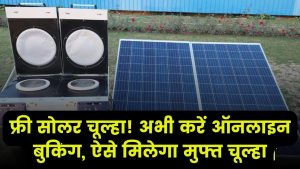Gardening in an apartment may seem like an impossible task, but it’s more than doable. In fact, growing an abundant garden without leaving your apartment can be both enjoyable and incredibly rewarding. Whether you’re a seasoned gardener or a beginner, you’ll be surprised at the variety of plants you can cultivate in even the smallest of spaces. From fragrant herbs to lush vegetables, there are plenty of options to create a green sanctuary right inside your home. By understanding the essentials of apartment gardening, you’ll soon have an abundance of fresh, homegrown produce, herbs, and flowers, all without stepping foot outside.

The key to growing an abundant garden without leaving your apartment lies in understanding how to optimize your limited space. With the right indoor plants and the proper care, it’s easy to create a thriving garden. From selecting the perfect containers to making sure your plants get enough light, water, and nutrients, you can transform your apartment into a lush, productive green space that will give you satisfaction for months to come. Let’s dive into some of the essential tips for building your own indoor garden.
Table of Contents
Growing an Abundant Garden Without Leaving Your Apartment
Creating a bountiful indoor garden isn’t just about having enough space; it’s about creating the right environment for your plants to thrive. Growing an abundant garden without leaving your apartment requires careful planning around lighting, temperature, and moisture. Whether you want to grow herbs for cooking or vegetables for healthy meals, there are many options available that can be successfully grown indoors. The first step is to evaluate your available space—think about windowsills, balconies, or shelves where you can place plants. With the right conditions, you can cultivate a variety of plants that not only thrive but also make your home feel cozy and green.
Overview Table
| Category | Recommended Plants | Light Requirements | Best Container Type | Watering Needs |
|---|---|---|---|---|
| Herbs | Basil, Mint, Parsley, Thyme, Chives | Moderate to bright light | Small pots, window boxes | Regular but not excessive |
| Vegetables | Lettuce, Spinach, Radishes, Tomatoes | Bright, direct light | Grow bags, small pots | Consistent watering |
| Flowers | Geraniums, Marigolds, African Violets | Bright, indirect to direct light | Hanging baskets, pots | Moderate watering |
| Succulents and Cacti | Aloe Vera, Jade Plant, Echeveria, Cactus | Bright, direct light | Small pots | Infrequent watering (once a week) |
Growing an abundant garden without leaving your apartment is not only achievable, but it can also be an incredibly rewarding experience. With a bit of planning and attention to detail, you can enjoy fresh, homegrown produce, herbs, and flowers in your own space. By selecting the right plants, creating the ideal environment, and maintaining proper care, your indoor garden can flourish year-round. Whether you’re growing herbs for cooking or flowers for decoration, an apartment garden can offer numerous benefits, including a more sustainable lifestyle, a relaxing atmosphere, and a sense of accomplishment as you watch your plants grow and thrive.
Selecting the Right Plants for Your Apartment Garden
Choosing the right plants for your apartment garden is the most important step in ensuring success. Not all plants are suited for indoor growth, and some may require special care to thrive inside. The key to growing an abundant garden without leaving your apartment is selecting plants that match the lighting conditions of your home. If you have a sunny windowsill, you can grow plants that require lots of light, such as tomatoes, peppers, and most herbs. For areas with less natural light, opt for plants like ferns, spider plants, or peace lilies that are low-maintenance and adapt well to lower light environments.
Herbs are often the go-to choice for apartment gardeners because they’re compact and easy to maintain. Varieties like basil, thyme, and mint are perfect for smaller spaces, and they’re perfect for adding flavor to your meals. Indoor vegetable gardens are also becoming more popular, and growing veggies like lettuce, spinach, and radishes can be a fun and rewarding experience. With the right containers and conditions, you can enjoy homegrown greens all year long.
Creating the Ideal Growing Environment
Your apartment’s environment is critical to the success of your indoor garden. Plants need specific conditions to thrive, and that includes proper lighting, temperature, and humidity levels. If your apartment has access to natural light, you’ll want to maximize it by placing plants near windows. South-facing windows are ideal for sun-loving plants, while north-facing windows provide less light, making them better suited for plants that thrive in lower light conditions.
However, if you’re lacking natural sunlight, you can invest in grow lights that simulate natural light and encourage healthy plant growth. Temperature is also important, as most indoor plants do well in a range of 65-75°F (18-24°C). Be mindful of placing your plants near heating or air conditioning units, as extreme temperature fluctuations can stress your plants and stunt their growth.
Choosing the Right Containers
The container you use for your plants can greatly affect their growth and overall health. The key to choosing the right container is ensuring it’s the correct size and has proper drainage. Too small of a pot can restrict root growth, while too large of a container can lead to water retention and root rot. For apartment gardens, using small pots, window boxes, or hanging planters is ideal for conserving space and allowing for good drainage. When growing vegetables or larger plants, consider using deeper containers or grow bags, which provide enough room for roots to spread and allow for good air circulation.
Most plants also benefit from containers with drainage holes, as this prevents excess water from accumulating at the bottom and potentially causing root rot. If your pots don’t have drainage holes, you can create your own by using a drill or adding rocks to the bottom of the container to encourage water flow.
Watering and Maintenance Tips
Watering your plants correctly is essential for healthy growth. Overwatering is one of the most common mistakes indoor gardeners make, as it can lead to root rot and other issues. It’s important to let the soil dry out a bit between waterings, especially for plants like succulents and cacti, which prefer to dry out completely between waterings. For most plants, you’ll want to water them once the top inch of soil feels dry to the touch.
It’s also important to ensure that your plants receive adequate moisture, but not too much. Investing in a self-watering system or watering plants in the early morning or evening can help maintain the right balance of moisture. Plants in small containers will need more frequent watering, while larger pots will retain moisture for longer.
Dealing with Pests in Your Apartment Garden
While apartment gardens are generally less prone to pests than outdoor gardens, that doesn’t mean they’re immune. Common indoor pests include aphids, spider mites, and mealybugs, which can damage your plants if left unchecked. The best way to deal with pests is to catch them early by inspecting your plants regularly for signs of damage or infestation.
If you notice pests, treat your plants with natural remedies such as neem oil or insecticidal soap. For minor infestations, you can even wash the pests off with a mixture of water and mild soap. Regular cleaning of your plants, including wiping down their leaves, can also help prevent pests from setting up shop.
Stay Hydrated Sustainably: Finding the Best Eco-Friendly Water Bottles for Your Lifestyle
FAQs
What are the best indoor plants for low-light apartments?
Indoor plants like peace lilies, snake plants, and spider plants do well in low-light conditions and are perfect for apartments with limited sunlight.
Can I grow vegetables indoors without a garden?
Yes, many vegetables, such as lettuce, spinach, and herbs, can be successfully grown indoors in containers, making them perfect for apartment gardening.
How often should I water my indoor plants?
Watering frequency depends on the type of plant. Generally, water when the top inch of soil feels dry to the touch. Succulents and cacti require less frequent watering than other plants.
What is the best way to deal with indoor plant pests?
If you notice pests, use natural remedies like neem oil or insecticidal soap. Alternatively, gently wash the pests off with water and mild soap.
Do I need special lighting for my indoor garden?
If you don’t have access to natural light, using grow lights can help provide the necessary light spectrum for healthy plant growth, especially for sun-loving plants.

















